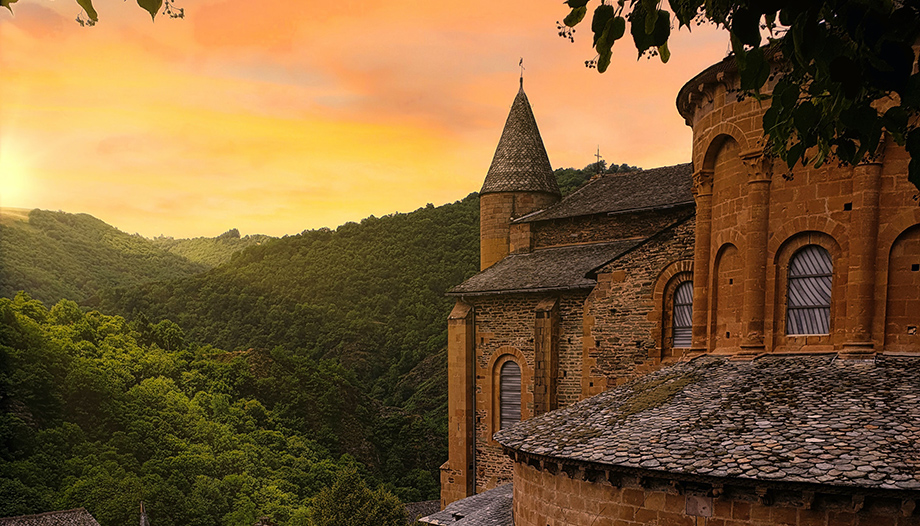It starts in Le Puy en Velay and crosses the Pyrenees via the Roncesvalles pass. If it is by far the most "popular" of the great pilgrimage routes to Santiago in France, it is undoubtedly due to this first section: from Le Puy to Conques, which has become almost a "pilgrimage" in itself. A part of the road with which many are satisfied. With a length of approximately 300 kilometers, which represents about fifteen days of walking for the "classic" hiker, this route can indeed be a very beautiful journey in itself. Indeed, for its exceptional sites, beauty and diversity of landscapes, it can fulfill many expectations. And then, between wild spaces, riversides and bucolic places, it plunges us perhaps more than any other in a "sweet France" dreamed but very real.
The Via Podiensis has its origin in the name of the town of Le Puy-en-Velay, from where Bishop Godescalc set out for Compostela in 950 AD, accompanied by a large group of people such as troubadours, minstrels, pages, barons, seneschals and, of course, archers and spearmen to protect them. The bishop was then the first non-Spanish pilgrim to make the pilgrimage to Compostela.
The route from Le Puy en Velay to Conques crosses 4 regions rich in flora, fauna and geological diversity: the volcanic Velay, the Margeride plateau, the heights of Aubrac and the Lot valley. Landscapes of breathtaking beauty, such as the view of the gorges of the Allier or the wild plateau of Aubrac.
Arrived in Conques, for many it will be the end of the journey. It will be time to get back on a bus and return to their professional life, to their daily life. It is true that this almost perfect route, certainly frequented, but without reaching the multitude of people who walk the Camino in Spain, can really be a journey in itself. But continuing, or returning later to continue walking, is also worthwhile. First of all, because a few stages later, you can walk through the beautiful valley of the Célé, and also because the road to Compostela continues, simply, through very beautiful regions and less convenient corners, but that is also part of the journey! Le Puy-Conques is certainly very beautiful, pleasant and full of surprises. But it is almost too perfect to fully appreciate the very contrasting character of the pilgrimage to Santiago, which sometimes immerses the pilgrim, in a monotonous environment, to perhaps make it easier for him to confront himself. The nomad does not set out if he does not have a promised land to dream of; which often ends up being a large or small conversion of the heart of the pilgrim who proclaims himself the herald of his own transformation.
The pilgrim, like the hero of Greek mythology, ventures out of the world of ordinary life and enters a place of supernatural wonders; there he confronts fabulous forces and wins a decisive victory; the hero returns from this mysterious adventure endowed with the power to bestow benefits on man, his fellow man.
Camino de Santiago, on the way to a sacred place, pilgrims feel every church they pass through as their own home and atheists light candles and receive blessings.
Omnes correspondent in France.











